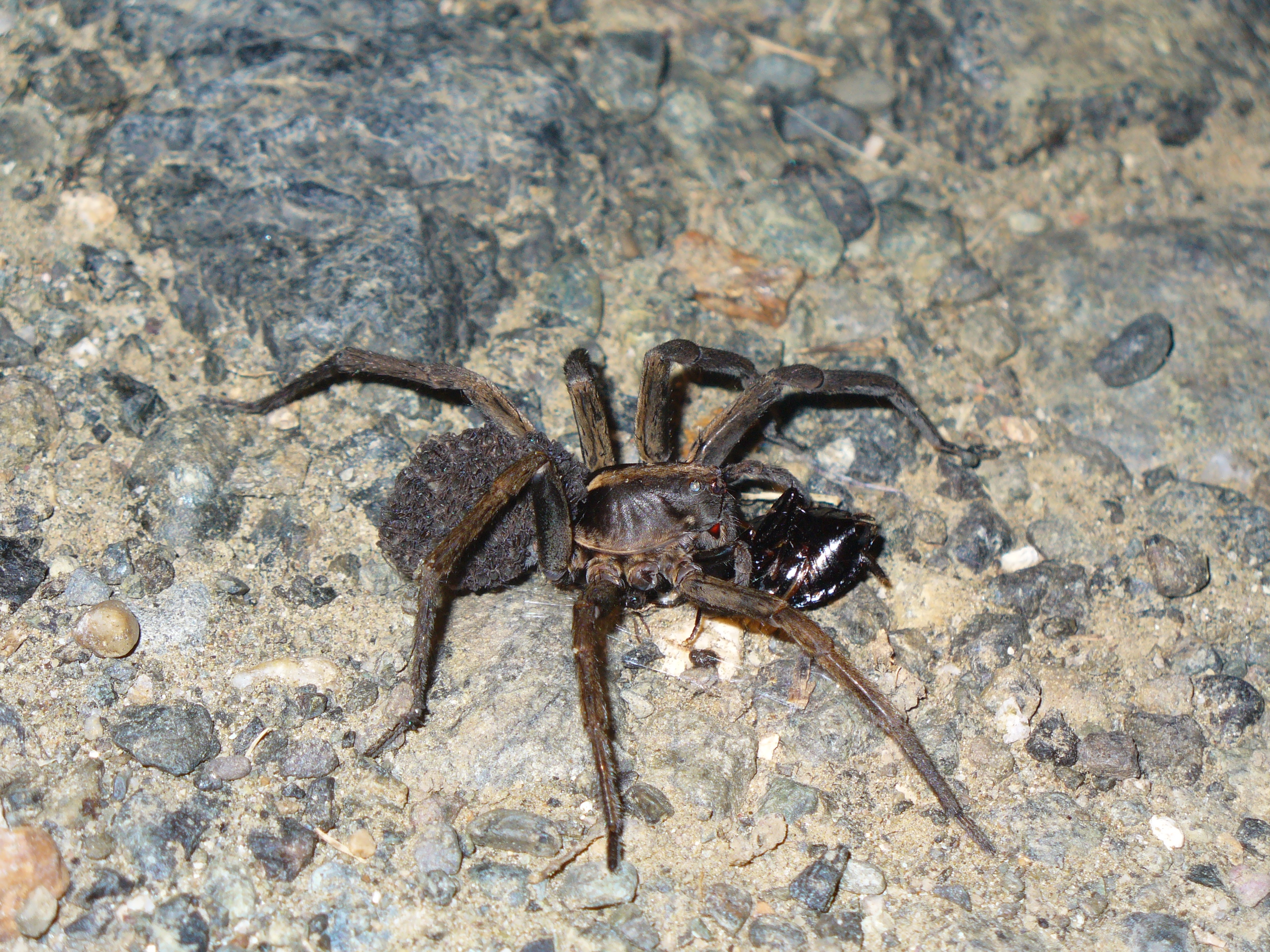
|
Scientific classification
| Kingdom: |
Animalia
|
| Phylum: |
Arthropoda
|
| Class: |
Arachnida
|
| Order: |
Araneae
|
|
|
Families:
|
Araneae
(Sundevall, 1833) |
Wolf spiders are members of the family Lycosidae, from the Greek word "λύκος" meaning "wolf". They are robust and agile hunters, and have good eyesight. They live mostly solitary lives and hunt alone. Some are opportunistic wanderer hunters, pouncing upon prey as they find it or chasing it over short distances. Others lie in wait for passing prey, often from or near the mouth of a burrow.
Like all species, wolf spiders have a primitive body structure, with a head used mainly for eating and breathing, and an abdomen, which carries all the spider's organs, including the spinnerets. Many of the sub- species, which include the large and common grey wolf spider, are a mixture of greys and light browns, hence the name. This colour scheme camoflages the spider and allows it to creep up on its prey, which are usually large insects, and attack it from behind. Although they are subtle, the male's colours consist of more browns than greys, as this is used for attracting females during courtship.
There are several genera of Wolf spider, ranging in size from less than 1 to 30 millimetres (0.04 to 1.18 in). [1] They have eight eyes arranged in three rows. The bottom row consists of four small eyes, the middle row has two very large eyes (which distinguishes them from the Pisauridae), and the top row has two medium-sized eyes. They depend on their eyesight, which is quite good, to hunt. Their sense of touch is also acute.


Wolf spiders are unique in carrying their eggs along with them in a round silken globe, or egg sac,which they attach to the spinnerets at the end of their abdomen. The abdomen must be held in a raised position to keep the egg case from dragging on the ground, but they are still capable of hunting while so encumbered. Also unique among wolf spiders is their method of infant care. Immediately after the little spiders hatch and emerge from their protective silken case they clamber up their mother's legs and all crowd onto her abdomen.
Behavior
Wolf spiders can be found in a wide range of habitats both coastal and inland. These include shrublands, woodland, wet coastal forest, alpine meadows and suburban gardens. Spiderlings disperse aerially and consequently wolf spiders have wide distributions. Although some species have very specific microhabitat needs (such as stream-side gravel beds or montane herb-fields) most are wanderers without permanent homes. Some build burrows which can be opened or have a trapdoor. Arid zone species construct turrets or plug their holes with pebbles during the rainy season to protect themselves from flood waters.
The wolf spiders are capable of nothing defensive to bites, and some South American species may give bites that are medically significant. However, in general their presence works very much in favor of humans wherever they are found.
Toxicity
Wolf spiders may or may not be aggressive but will inject venom freely if continually provoked. Symptoms of their venomous bite include swelling, mild pain and itching. Though usually considered harmless to humans, the bite of some species may be painful. In the past, necrotic bites have been attributed to some South American species, but further investigation has indicated that those problems that did occur were probably actually due to bites by members of other genera.[2] Australian wolf spiders have also been associated with necrotic wounds, but careful study has likewise shown them not to produce such results.
References
- Wikipedia, the free encyclopedia
- Ribeiro LA, Jorge MT, Piesco RV, Nishioka SA, 1990. Wolf spider bites in Sao Paulo, Brazil: a clinical and epidemiological study of 515 cases. Toxicon 28: 715–717.[Medline]

